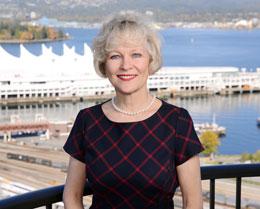Trudeau Giveth and Trudeau Taketh Away

By Catherine Sas, K.C.
Special to The Post
Every year Canada’s immigration minister has until November 1st to set the annual immigration targets for the following year. Last week Canada unveiled its new levels plan significantly reducing the targets for both permanent and temporary immigration. This is a dramatic change from the Trudeau government’s steady increase in immigration levels over the past decade. Let’s review some of the more significant features of last week’s announcement and see how they compare.
Historically Canada’s immigration plan sets out the proposed levels for permanent immigration generally dividing our immigration program into two streams - economic and non-economic which is comprised of family immigration, refugees and protected persons and humanitarian and compassionate cases. The general division between economic and non-economic is on a 60% to 40% ratio, respectively. This year is the first time that Canada’s immigration levels plan sets targets for both permanent and temporary immigration levels.
With the introduction of the Express Entry program on January 1, 2015, temporary entry to Canada as either a student or worker became essential as a means to qualify for immigration under this new program. Express Entry has a complex points scoring system providing prospective applicants with a Comprehensive Ranking Score (CRS). Points are given for such things as age, education and language proficiency with an emphasis on Canadian education and Canadian work experience. As connecting with a Canadian employer from abroad is often challenging, coming to Canada as an international student offers the double benefit of providing a prospective immigrant with both a Canadian education and an opportunity to obtain up to three years of Canadian work experience. Given this reality, Canada’s international student population grew dramatically with many sources touting nearly one million international students in Canada as of 2023. The intention and expectation of most of these students was to obtain Canadian permanent residency as their ultimate outcome.
Prior to Express Entry in 2015, Canada’s immigration levels remained rather steady for a period of approximately fifteen years with annual permanent residents hovering in the range of 250,000 to 260,000 immigrants per year. However, this changed shortly after the election of the Trudeau government in November 2015. In 2016 immigration levels were set at 300,000 yet by 2023 these targets had grown to 500,000 permanent residents for 2025 and 2026. In only a decade the Trudeau government had doubled the size of Canada’s annual immigration levels from 250,000 to 500,000 permanent residents per year! Coupling this reality with an unchecked temporary resident population you can see why Canada was experiencing challenges to their education, medical and housing systems.
For the international student or the foreign worker in Canada expecting that they would somehow qualify for permanent residence, there was a harsh reality to face. There were far more temporary residents in Canada than we could absorb permanently. Referring to the million-person international student figure above, and even with the 500,000 immigrant target levels previously set, there were always going to be many hopeful immigrants unable to attain their dream - even with a Canadian education and Canadian work experience.
The new levels plan introduced next week reduces permanent residence targets previously set as follows:
|
2025 |
500,000 |
to |
395,000 |
|
2026 |
500,000 |
to |
380,000 |
|
2027 |
Undetermined |
365,000 |
|
There is also a corresponding reduction of the international student and foreign worker levels along with a new In-Canada Focus category for permanent residence which aims to transition Canada’s temporary resident population to permanent residency. It is not challenging to connect the dots that these levels reductions are in anticipation of an upcoming election for a beleaguered government.
Prospective immigrants need to roll with the times and adapt to this new immigration reality. As immigration lawyers we have been saying for years - strategy is key if obtaining Canadian permanent residence is your goal. Permanent residency may be the ultimate aspiration for both international students and foreign workers, but there is no guarantee that you will attain this result. It is imperative that you develop a plan from the time you first set foot in Canada and maximize your opportunity to achieve your Canadian permanent residency dream.
Catherine Sas, K.C. has over 30 years of legal experience. he provides a full range of immigration services and is a leading immigration practitioner (Lexpert, Who’s Who Legal, Best Lawyers in Canada). Go to canadian-visa-lawyer.com or email [email protected].






